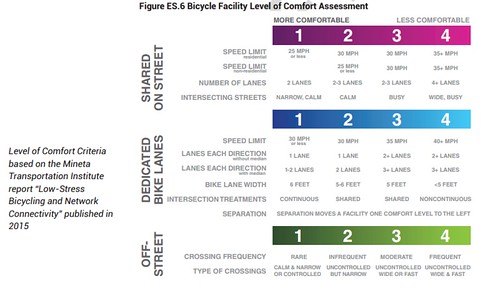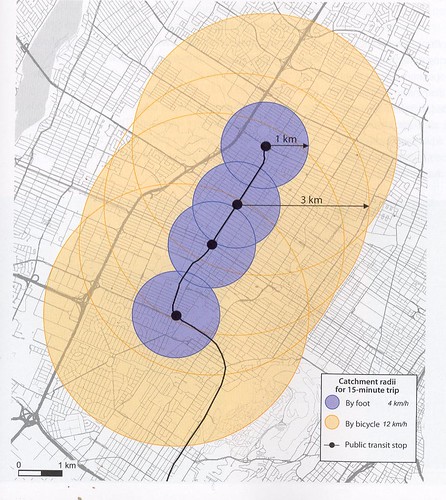Houston's talks sustainability mobility
Despite the reality that Houston, Texas is known for sprawl, massive highways, and a constant program of freeway expansion, Houston's new mayor, Sylvester Turner, and previous mayors, such as Annise Parker, have been/are committed to sustainable transportation.
Houston has just released a new bike plan, and in response Mayor Turner discussed how the city needs to shift from a focus on automobility. From the Houston Chronicle article, " Turner gets bike crowd moving to its feet":
“Every time we can do something other than get in a car, that is a plus,” Turner told attendees of the Texas Trails and Active Transportation Conference, meeting in the Texas Medical Center. ...I'm actually impressed. I can't think of a mayor of DC who has been quoted in the local media making a comparably strong policy statement preferencing sustainable mobility.
A citywide bike plan, which Turner said the city will use to build a much better bike network, is just one of the efforts underway to make Houston – though still car-centric – an example of good bicycle policies.
“We are moving in the right direction,” he said. “We are not where we want to be, or even where we need to be. But the reality in this city is we are not standing still.”
The Houston Bike Plan reflects the current trend in bike planning in focusing on perception of "comfort" for biking in terms of structuring recommendations for particular types of treatments and infrastructure, in terms of how the amount of motor vehicle traffic, its speed, and other characteristics shape the average person's willingness to cycle for transportation. The plan puts forward some solid metrics too.


Houston's sustainable transportation initiatives. Mayor Turner stated that more transportation initiatives will be announced later in March, when his various transition committees have released their reports. One expected recommendation is the creation of a city transportation director.
Houston has a developing light rail system, although not with particularly scintillating ridership, has begun installing cycletracks, and has a small bicycle sharing program.
 Scenic Houston is leading an effort to add trees, better sidewalks and modern lighting on the 2-mile stretch of Broadway between Hobby Airport and Interstate 45. The area often creates the first impression of Houston for visitors leaving the airport.
Scenic Houston is leading an effort to add trees, better sidewalks and modern lighting on the 2-mile stretch of Broadway between Hobby Airport and Interstate 45. The area often creates the first impression of Houston for visitors leaving the airport.Urban design improvements on Broadway. In line with my thinking about transportation infrastructure as an element of civic architecture and what I call "Signature Streets," in how a community's primary road network defines it, either beneficially or negatively, depending on its aesthetic qualities and the urban design and placemaking qualities embodied within it, the group Scenic Houston has developed an urban design treatment program for Broadway Street, a major artery serving Hobby Airport. The street reconstruction program will improve the aesthetic qualities of the street in keeping with how the road functions as an eminent gateway to and from the city.
Construction will start in the spring.
ReBuild Houston road repair financing program. Another initiative dates back a few years, when the city developed a specific program to fund street repair called ReBuild Houston, funded by an addition to the city's drainage fees, and complemented by other funding sources, although it is not expected that the fund will be fully funded until about 2020.
The program devotes 25% of funds to simple/spot repair and the rest to significant rehabilitation. It shifted to a prioritization system based on data rather than political choices, focused on repairing roads in the worst condition regardless of location.
The program has had some issues. Some quarters still oppose the fee, out of an opposition to virtually any form of taxation, and how the fee replaced a bond financing program, which required public voting on referenda from time to time, to continue or increase the financing.
Everybody interacts with roads. In an article ("Roads shape race for mayor - Candidates parse future of ReBuild in potential fixes") on the program in the Houston Chronicle--the website has a paywall, but if you have access to public library newspaper databases you can get access--has a great quote about the role roads play in politics:
What residents see, however, is pockmarked streets. Cities can fall behind on many things, but road repair is rarely one of them.Texas Active Transportation Conference. The Texas Trails and Active Transportation Conference is a biennial conference sponsored by the state bike advocacy group, Bike Texas, and the Texas Trails Network. Most bike advocacy groups have annual conferences, but I think this particular conference form is a better model than focusing on biking alone.
"Especially in Houston where we don't have a lot of public transportation, roads are the one thing the public interacts with all the time," said Ryan Kennedy, a University of Houston political scientist.
 Moving to the Sustainable Mobility Platform as a unifying planning concept. Although more and more I am thinking about this in terms of what I am calling the "sustainable mobility platform," which at a minimum includes walking, biking, transit, bike and car sharing, and ride sharing in various forms.
Moving to the Sustainable Mobility Platform as a unifying planning concept. Although more and more I am thinking about this in terms of what I am calling the "sustainable mobility platform," which at a minimum includes walking, biking, transit, bike and car sharing, and ride sharing in various forms. Another way to term this is the "product-service system" for sustainable mobility.
This extends previous writings on the transit shed and the mobility shed, what I once called "the amenity shed" and Transportation Alternatives' transportation hierarchy graphic.
Another way to think of it is as an extension of the concept diagram of "cycling as a system," from the 2002-2012 German national bike plan.


Catchment area of public transit stops for pedestrians and cyclists. From Planning and Design for Pedestrians and Cyclists: A Technical Guide, page 135, published by VeloQuebec.
Labels: bicycle and pedestrian planning, car culture and automobility, public finance and spending, sustainable mobility platform, transportation infrastructure, urban design/placemaking




0 Comments:
Post a Comment
<< Home